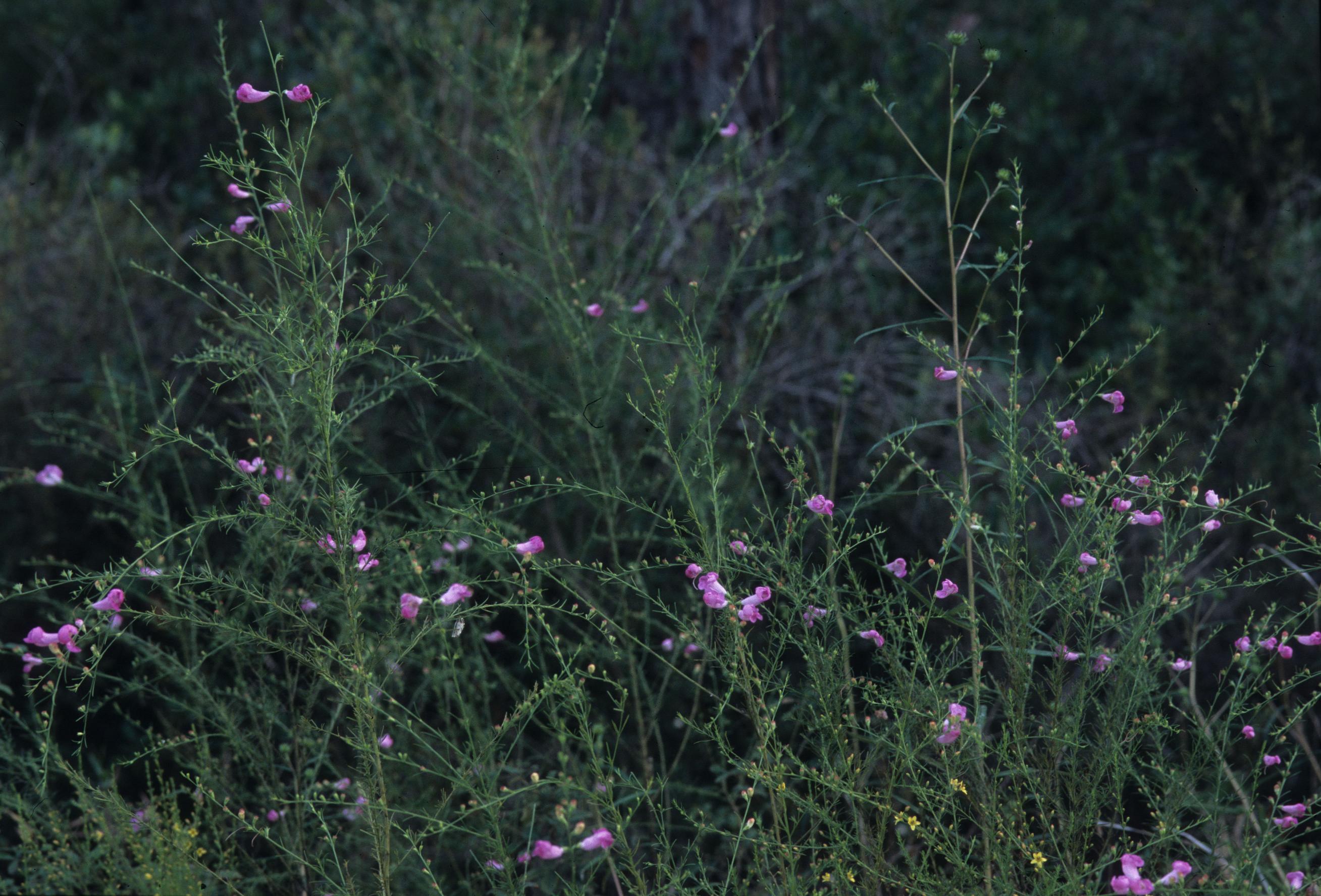Difference between revisions of "Agalinis fasciculata"
Krobertson (talk | contribs) |
Krobertson (talk | contribs) |
||
| Line 40: | Line 40: | ||
===Fire ecology=== <!--Fire tolerance, fire dependence, adaptive fire responses--> | ===Fire ecology=== <!--Fire tolerance, fire dependence, adaptive fire responses--> | ||
===Pollination=== | ===Pollination=== | ||
| − | + | ''Agalinis fasciculata'' was observed on the following Hymenoptera families and species at Archbold Biological Station: | |
| − | Colletidae: ''Hylaeus confluens'' | + | Colletidae: ''Hylaeus confluens'' Halictidae: ''Augochlorella gratiosa'' Megachilidae: ''Megachile albitarsis'' |
| − | |||
| − | Halictidae: ''Augochlorella gratiosa'' | ||
| − | |||
| − | Megachilidae: ''Megachile albitarsis'' | ||
===Use by animals=== <!--Herbivory, granivory, insect hosting, etc.--> | ===Use by animals=== <!--Herbivory, granivory, insect hosting, etc.--> | ||
Revision as of 14:07, 31 July 2015
| Agalinis fasciculata | |
|---|---|

| |
| Photo was taken by Gil Nelson | |
| Scientific classification | |
| Kingdom: | Plantae |
| Division: | Magnoliophyta - Flowering plants |
| Class: | Magnoliopsida - Dicotyledons |
| Order: | Lamiales |
| Family: | Orobancheaceae |
| Genus: | Agalinis |
| Species: | A. fasciculata |
| Binomial name | |
| Agalinis fasciculata (Elliott) Raf. | |

| |
| Natural range of Agalinis fasciculata from USDA NRCS Plants Database. | |
Common names: Beach False Foxglove; Cluster-leaf Gerardia
Synonym names: A. fasciculata var. peninsularis Pennell; Gerardia fasciculata Elliott; Gerardia fasciculata subsp. peninsularis (Pennell) Pennell
Contents
Description
It is an annual plant and it produces large, pink flowers in late summer (Musselman et al 1979). Numerous small capsules each carrying hundreds of brown honeycombed seeds mature in late autumn (Musselman et a 1979). Agalinis fasciculata is a root hemiparasite. A great variety of herbaceous and woody plants make up its host range. (Musselman et al 1979). Is an annual (Radford 1964). It flowers summer to fall and also all year in the southern peninsula (Wunderlin and Hansen 2003).
Distribution
It is common in all of Florida. Found from: west to Texas, north to North Carolina (Hall 1993).
Ecology
Habitat
It can be found in frequently burned pine sandhills (Entisols), flatwoods (Spodosols), upland pine communities and shortleaf pine-oak-hickory woodlands (Ultisols), as well as calcareous glades, and margins of ponds, lakes, depressions, marshes, and wet meadows, and on the borders of dunes (Musselman et al 1979; FSU Herbarium). It occurs on a wide range of soil types from deep sands to loamy clay (FSU Herbarium). It requires high light provided by frequently burned areas (Musselman et al. 1979; FSU Herbarium). It can occur on very disturbed soils, such those in railroad and power line rights-of-way, clear-cut areas, disturbed roadsides, dredged up sand, and site-prepped pine forests (Musselman et al 1979; FSU Herbarium). It appears to be somewhat salt tolerant given its proximity to salt marshes (Musselman et al. 1979) and co-existence with Spartina bakari and other brackish and salt water plants (FSU Herbarium). Fond in sandhills, coastal scrub, tidal wetland margins, and flatwoods (Wunderlin and Hansen 2003). Found in sandhills, savannahs, and roadsides (Radford 1964).
Phenology
Seed dispersal
Seed bank and germination
Fire ecology
Pollination
Agalinis fasciculata was observed on the following Hymenoptera families and species at Archbold Biological Station:
Colletidae: Hylaeus confluens Halictidae: Augochlorella gratiosa Megachilidae: Megachile albitarsis
Use by animals
Diseases and parasites
Conservation and Management
Cultivation and restoration
Photo Gallery
References and notes
FSU herbarium http://herbarium.bio.fsu.edu/
Hall, David W. Illustrated Plants of Florida and the Coastal Plain: based on the collections of Leland and Lucy Baltzell. 1993. A Maupin House Book. Gainesville. 341. Print.
Musselman, L. J. and W. F. Mann, Jr (1979). "Agalinis fasciculata (Scrophulariaceae), a native parasitic weed on commercial tree species in the southeastern United States." American Midland Naturalist 101: 459-464.
Radford, Albert E., Harry E. Ahles, and C. Ritchie Bell. Manual of the Vascular Flora of the Carolinas. 1964, 1968. The University of North Carolina Press. 960. Print.
Wunderlin, Richard P. and Bruce F. Hansen. Guide to the Vascular Plants of Florida. Second edition. 2003. University Press of Florida: Gainesville/Tallahassee/Tampa/Boca Raton/Pensacola/Orlando/Miami/Jacksonville/Ft. Myers. 546. Print.